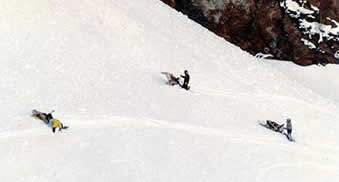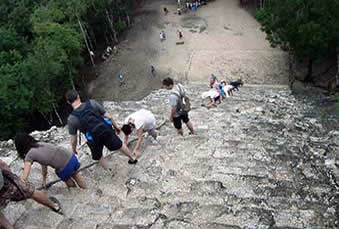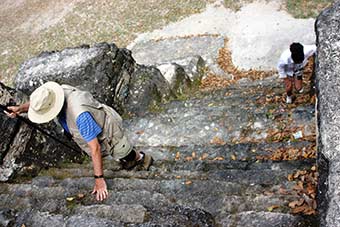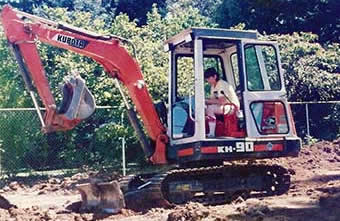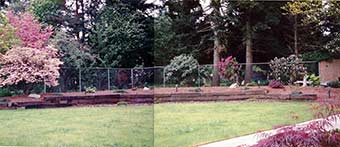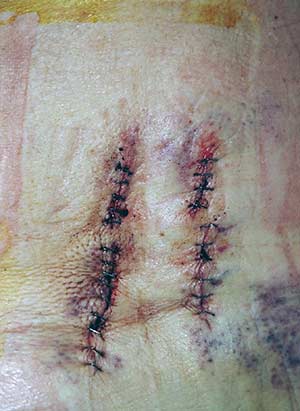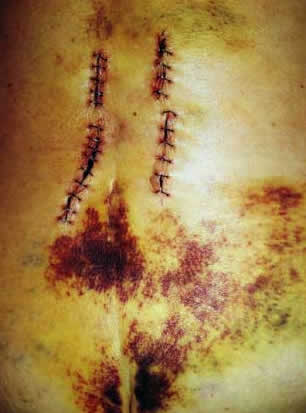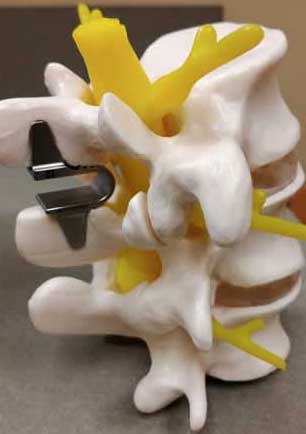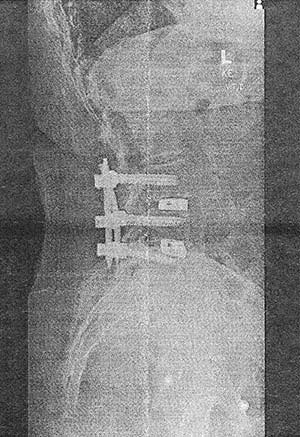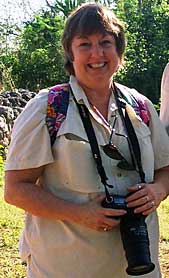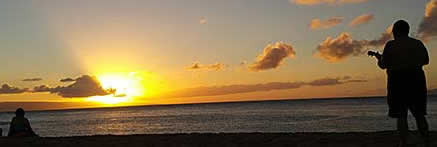 |
|
AFTER THE ADVENTURES: Back Issues |
|||
Story and most photos by Vicki Hoefling Andersen |
|||
Other Photos as Credited |
Life needs adventure, whether it’s a trip to Patagonia or a day at the local farmer’s market. But sometimes the “adventures” take their toll on our bodies, most often our backs and spines. Our spine runs from the base of our skull to our tailbone and consists of muscles, tendons and small bones called vertebrae. These bones enclose the spinal cord and its 31 pair of nerves, and are divided into five regions: cervical, thoracic, lumbar, sacrum, and coccyx. The lumbar region has one of the three normal curves in our spine, with five vertebrae. (In comparison, dogs have seven lumbar vertebrae.) From early childhood we curl into summersaults and spin cartwheels, and test our jumping skills from increasingly loftier heights. As adults we seek out equipment, toys and tasks that continue to shake our backs, pound it, and otherwise compress it until our precious discs begin to bulge. Scientists who measure such things estimate a 200 pound person dropping six feet lands with nearly 10,000 pounds of force.
Back-hip-knee-twisting maneuvers like the Jump Over (above left) aren’t exactly recommended
by most physical therapists. I always liked small jumps where I could stretch a Spread Eagle or twist off a Helicopter (above right). Photos by John Hoefling By my early thirties I’d been teaching skiing for over 15 years, much of it in the style of the early “freestyle” mania that made devotees look like pretzels on the slopes, bobbing up and down through the bumps like jack-in-the-box toys. When my lower back pain started, I was off to a highly-rated orthopedic surgeon who x-rayed my lumbar and sacrum, pronouncing them “sacralizing” and warned it would worsen as I wizened. Although born with 33 vertebrae, as we grow into adulthood, some vertebrae at the bottom of the spine fuse together and most of us are left with 24. Okay, so the base of my spine wants to join up with my pelvis, but I’ve decades ahead of me, with adventures to be experienced and playthings to be mastered.
The world of two wheels opened never-ending possibilities. Riding my cruiser on paved road
was always a joy, but dirt offers the potential for hillclimbing, blasting cross country, picking a tight trail through the forest, or chasing along a stream bed while avoiding boulders and deep water pockets. But hardest on the back and body is motocross, especially when your mount’s mono-shock has experienced so many tough miles there’s not much “shock” left.
More than two decades of climbing Maya pyramids at more than 70 sites can put your back, and legs, to the test. It’s not just the long and often steep stairways, or tiny depth of the treads (about 6” vs. today’s 8-10”) which are best tackled sideways—it’s the height of the risers which average 10,” a third taller than the steps we’re used to. No big deal if you’re climbing a dozen or two, but try many dozens of steps on countless structures every day for a week or two and you’ll understand.
Sometimes it’s just plain old landscaping that adds to back deterioration. Bang around in a backhoe for a few weekends to level a sloping yard, then install a long retaining wall of railroad ties. Even using proper posture, it still wears on the body and back.
That was so much fun, about 15 years down the road dig out and haul away the railroad ties, then load and hand-set a new wall of stone masonry. Over the last 40 years I have undergone many procedures and tried endless solutions to deal with my worsening back. I went to a chiropractor recommended by a long-time family friend and successful high school football coach. After a series of visits, his bottom line advice was: “Always sit down to put on your pantyhose; it will help keep your spine in alignment.” Numerous physical therapy sessions through the decades taught me that the human body is meant to move to keep the joints lubricated, but gave me no take-away of exercises that reduced my pain. A rheumatologist prescribed Plaquenil to help with inflammation and stiffness from osteoarthritis, but after taking that drug for four days, on the fifth I woke up with a rash from the top of my head to the soles of my feet. A few months of weekly visits to an acupuncturist and Reiki Master, who spent 11 years living and studying in Japan, didn’t rid me of back or knee pain but did align my chakra. Pain management doctors tried a cornucopia of pharmaceuticals: pain pills, muscle relaxers, anti-inflammatories, anti-spasm, even a few “brain pills” for anti-anxiety, depression and insomnia. Self-resorting to CBD balms and topicals helped a bit. I’ve undergone a slew of x-rays, MRI’s and CT scans. I’ve been poked with caudal epidural steroid and lumbar transforaminal epidural steroid and Toradol injections. There have been a couple of lumbar medial branch blocks and six radio frequency ablations. The worst problem was a disc bulge pinching my sciatic nerve which began spasming non-stop (literally, 24/7) reaching to my knee. Couldn’t sleep, couldn’t find a comfortable position in which to sit, hard to walk, and no relief. Finally in mid-April I threw in the proverbial towel and submitted to fusion of my L3-L4 and L4-L5 vertebrae, and removal of some disc protrusions, leaving me with a pair of cog railway lines marching up my back and a hardware-insertion incision at waistline. I spent the next week-plus mostly sleeping, my mind in a fog when I was “awake.”
I was happy when my left cheek began to feel a twinkling of life again after a week of total numbness, although based upon knee replacement surgery seven years ago I know it will take a long, long time before the nerves grow back and full feeling returns. It’s only a problem when I have an itch and can’t attack the source. I was ecstatic and amazed to wake up on Day 10 feeling like a totally new person. My sciatic nerve spasms had subsided, my head felt clear, and much of the pain had receded. Granted I still couldn’t bend or twist and sitting/standing was a test, but I found all sorts of creative compensations. I became pretty dexterous with my feet, grabbing all sorts of things to toss into the air, and playing snatch-and-catch. It was a game and a challenge and provided some amusement while still recovering.
Day 11 was a follow-up with my surgeon, who said he noticed a distinct “bounce” in my walk and was very pleased. X-rays showed everything doing well, and now two months post-surgery I am very happy with the results and my progress. I do ponder why the engineer of our human anatomy had to place the lumber region, most common of spinal fusions, where the “insert” incision has to be located at the waistline. Anything with a waist band rubs to the point of discomfort so my partial solution is going commando around home. Sorry if that’s TMI. I’ve learned names of procedures and body parts I didn’t know you could repeat in polite society. My back is plagued with sacralizing and osteoarthritis, broad-based disc bulge and moderate multilevel degenerative disc disease. Other issues include spondylolisthesis, facet hypertrophy and neuroforaminal stenosis. But before you shake your head and feel bad for me, I’ve also learned that most of these conditions are not uncommon as we move along in life. Take pleasure in the adventures that give you happiness, and don’t be afraid to address physical issues as they arise. There’s no avoiding the pitfalls of time and mileage. As Hunter S. Thompson summed it up, “Life should not be a journey to the grave with the intention of arriving safely in a pretty and well-preserved body, but rather to skid in broadside in a cloud of smoke, thoroughly used up, totally worn out, and loudly proclaiming “Wow - what a ride!” Disclaimer: This story relates my own experiences; I have no medical background or training. I have worked with and admired many members of the medical profession and practitioners of alternative methods, and have come away with various results. I do not endorse or recommend any particular path of help; each of us is unique in our injuries and recoveries. I do believe that a positive attitude and the best sense of humor you can muster definitely help. ABOUT THE AUTHOR
|
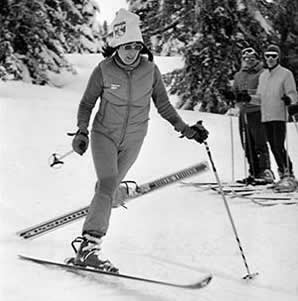
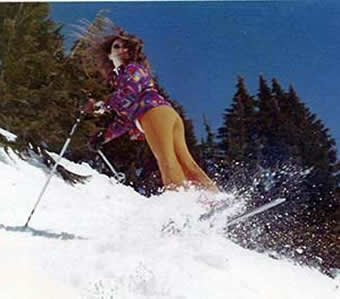
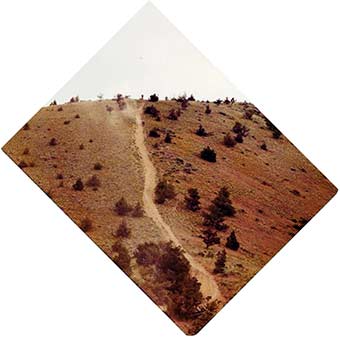
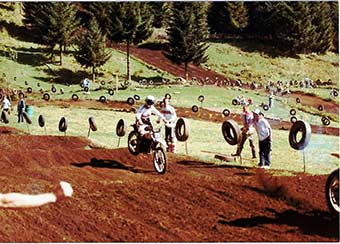 Photo by Rick Holcomb
Photo by Rick Holcomb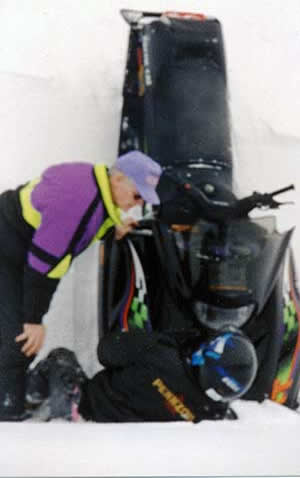 Snowmobiling the obsidian flow Paulina
Snowmobiling the obsidian flow Paulina